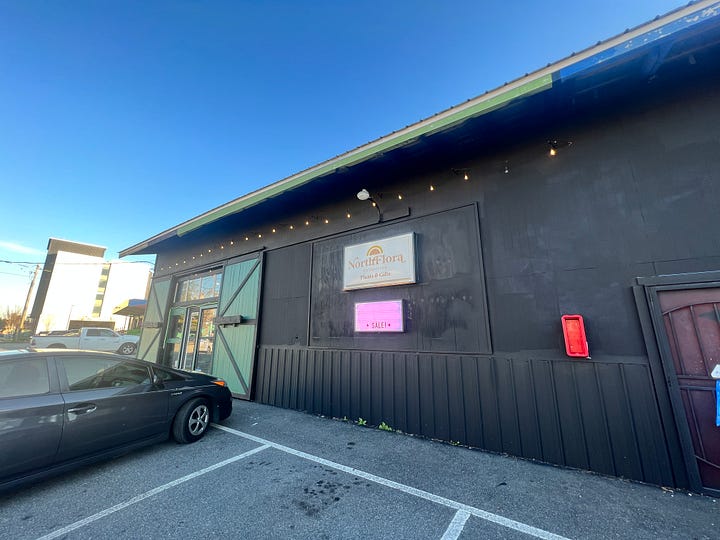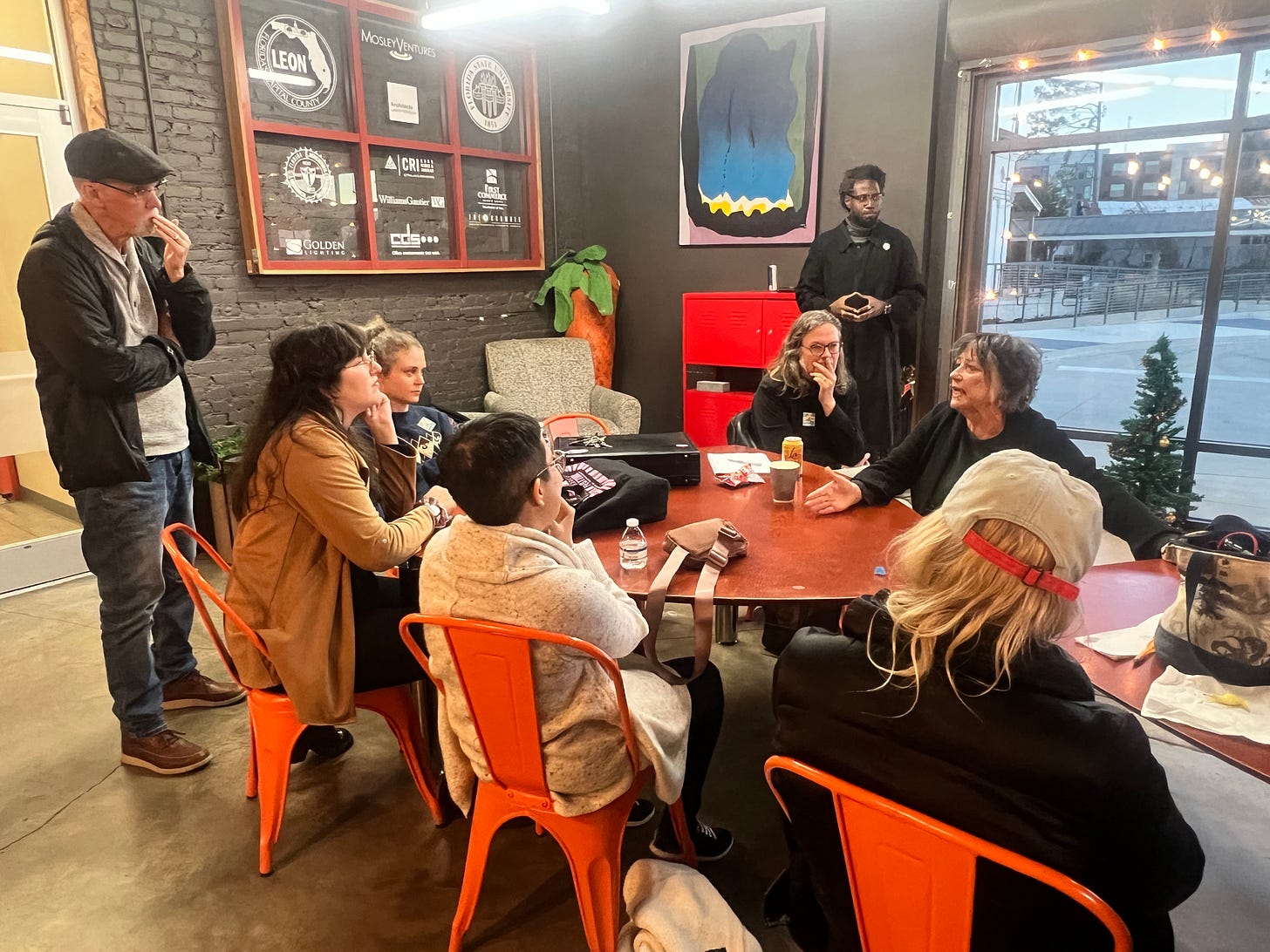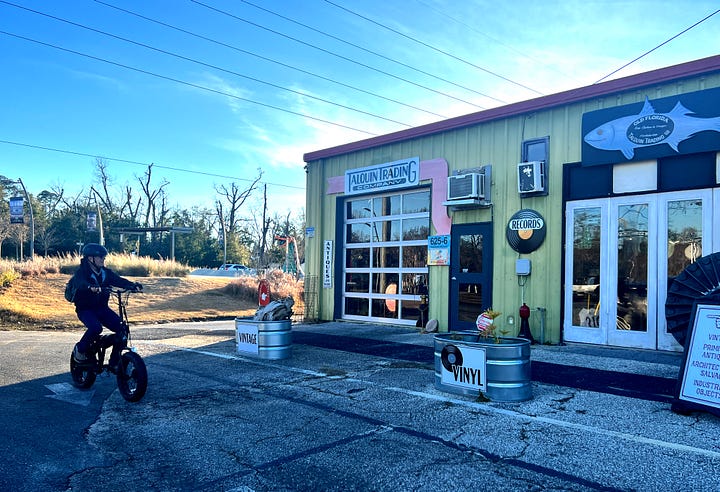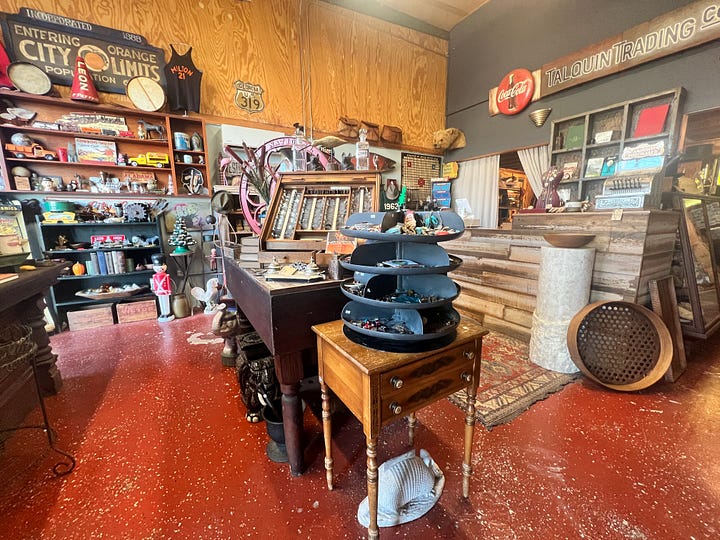Can Tallahassee's art district survive? Community members say they're hopeful amid uncertainty
The historic Railroad Square Art District has been under threat of being sold for years, but the artists and small business owners who have made it their home aren't letting it go without a fight.

Uncertainty about the future is nothing new for the artists and shop owners who rent space at Tallahassee’s only arts and culture district, known colloquially as “Railroad Square.”
“For the last number of years, it has been under threat of being sold,” said Terry Galloway, co-founder and director of the Mickee Faust Club, a small community theater that was located in the Railroad Square Art District for more than three decades.
Galloway is working with existing tenants to find investors who are willing to help them purchase and revitalize some of the colorful mid-20th century warehouse buildings that make up the former industrial park-turned-art district.
“We've been doing a lot of work on this for a year, trying to come up with different plans that would involve the city, that would invite private funding,” she said. “All of this to revitalize it, not to keep it as it is.”
They formed a group of nonprofits called the Railroad Square Revitalization Cohort, which has advocated for a new-and-improved art district, one that preserves some of the historic warehouse buildings and gives local artists and entrepreneurs rental space they can afford.
“Artists are always moving out onto the fringes because that's where affordability lies,” she added. “We cannot become sleek. We don't want to be too brand-new.”
Last spring tornadoes tore through the district, leaving some of its galleries, shops and venues in shambles and putting more pressure on the district’s owners to sell the property, which has been difficult to insure.
Most of the district’s tenants have recovered since the storms, but a few were left without a home, including Mickee Faust, which lost its stage and theater seating when the
building’s metal roof was peeled off and rain poured down inside.


“We do want to renovate these buildings,” she said. “We want them to be safe. We want them to be beautiful. We want the plumbing to work.”
Galloway says they’re hoping that a small community theater will someday have a home inside the district.
One idea is for the 621 Gallery to “anchor the western corner of the square” and a performing arts theater for Mickee Faust and other local acting troupes to “anchor the western corner of the square,” she explained, “as the two major art entities.”
Railroad Square could incorporate housing into the district
Adam and Lily Kaye — siblings who inherited the property from their mother about two decades ago — have long been open about their desire to sell most of the land.
“It’s likely there will be some residential development on around half of the property,” said Lily Kaye.
The siblings ultimately want to sell about 6.8 acres of the roughly eight acres that they own — or about 85% of the land. They would keep the rest, including the district’s art park and the surrounding buildings, which they’ve already invested in renovating.
“The property we would be keeping will continue to be used in the same way it is now,” Kaye said, “to rent to local businesses.”

After the storms caused widespread damage to the district, they reminded the public of their intention to sell and gave the city another opportunity to buy the property for a public art district. But city leaders have repeatedly refused.
In recent months, they’ve been talking with a residential developer about purchasing the northern half of the district — but they haven’t yet reached the final stages of negotiations, Kaye said. Right now, the idea is for the project to include apartments for people of all ages and lifelong learning classrooms.
“The developer is researching the project’s feasibility,” she said. “When we have a sales contract in place, we will let everybody know.”
If they reach a deal, that would leave parts of the district still up for sale, which the cohort could purchase if they find investors.
“I hope that they’re able to get the funds,” Kaye said. “They would have to do it quickly. We’re not going to wait around for years — they are going to be for sale.”

The Kayes have wanted to sell parts of the property for the last several years — and the only new development that’s come out of their efforts so far is the Hyatt House hotel near the district’s Railroad Avenue entrance.
In recent years, renderings of affordable housing developments have been published in the press, but none have ever materialized.
“We have seen so many renderings over this process that they bleed together,” said Josh Johnson, president and CEO of 621 Gallery and a member of the cohort.
Johnson said the cohort itself has produced possible designs to give potential investors an idea of what might best serve the interests of tenants and visitors to the district.
“A rendering is just an idea for the time,” he said. “Our next moves must be more concrete by going out and soliciting and trying to keyhole some investors.”
City leaders agree to help with planning, but won’t buy land
In a 3-2 vote, city commissioners recently ruled out buying nearly seven acres of the property, and instead directed Community Redevelopment Agency staff to help the cohort draft a plan to preserve and revitalize it.
If the proposal involves public dollars, it would then go before city commissioners for a vote at a later date.
“We do value this,” said City Commissioner Jeremy Matlow, who was among the ‘yes’ votes. “We do want to keep it.”
Matlow, along with City Commissioners Jack Porter and Curtis Richardson, voted in favor of the proposal to help the cohort. Mayor John Dailey and Commissioner Diane Williams-Cox said they opposed it because they didn’t want to commit staff time to the issue and expressed disappointment in the Kayes for not attending some recent public meetings.


City CRA staff have given the cohort some help already. For instance, the city hired an assessor who determined that the art district is worth about $6.4 million — how it’s used now — but could be worth more than $10 million if the land is used for housing or hotels.
“The assessment showed us things we needed to know in order to put forth the best proposal we could put forth for a private-public ownership of an arts district,” said Terry Galloway, who’s helping to lead the cohort.
But even if they find funders, they’d still have to negotiate a deal with the Kayes to purchase some of the property, and it’s unclear how much money the owners would accept.
Still, that’s not deterring them from continuing to try and secure public and private investment from funders who’d want to preserve a “city landmark,” Galloway said.
“There is hope — if the community comes together.”

